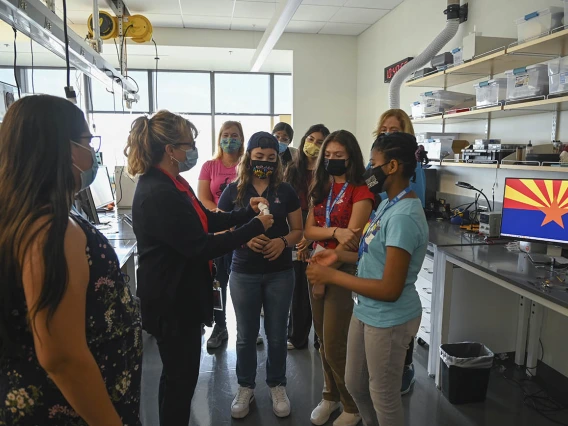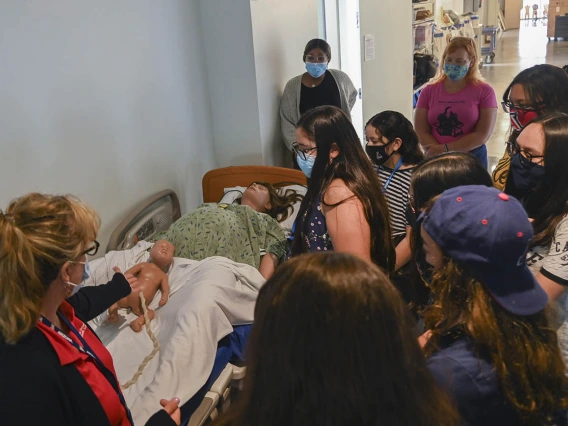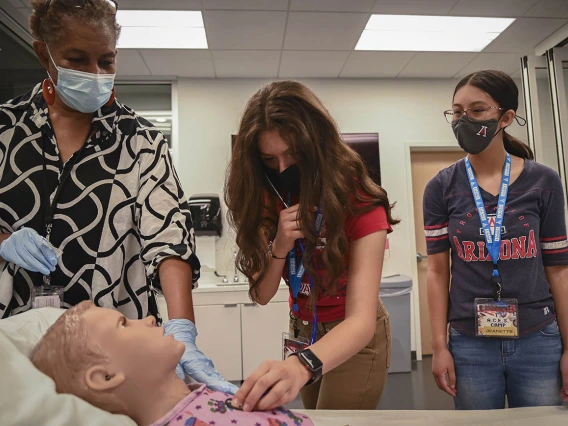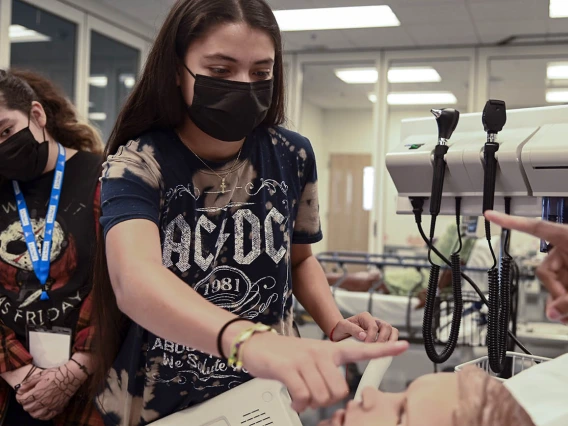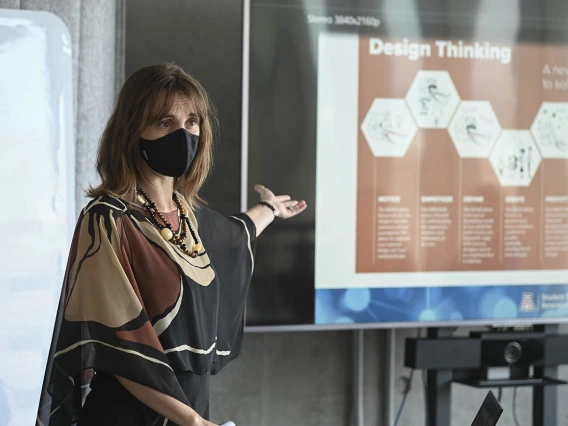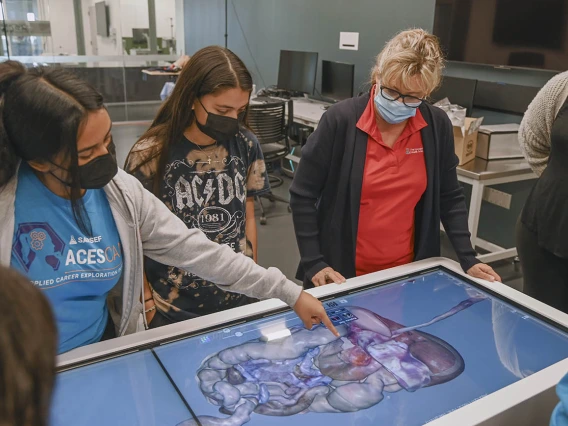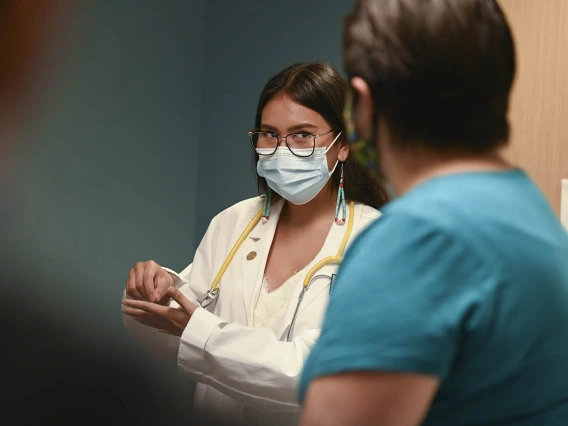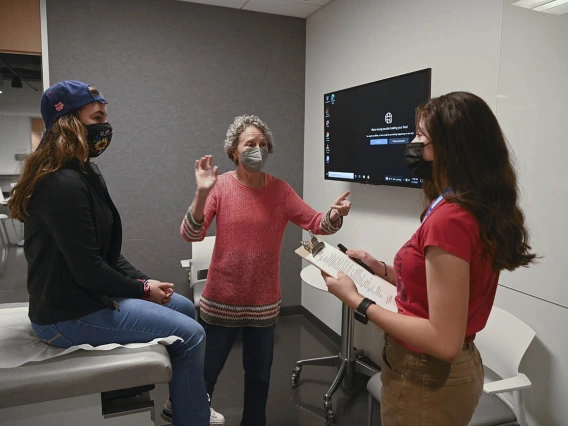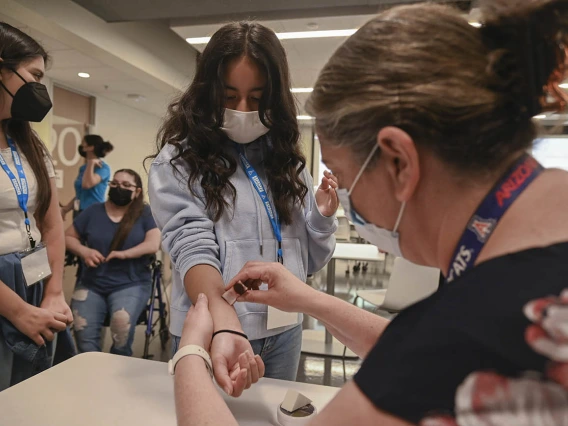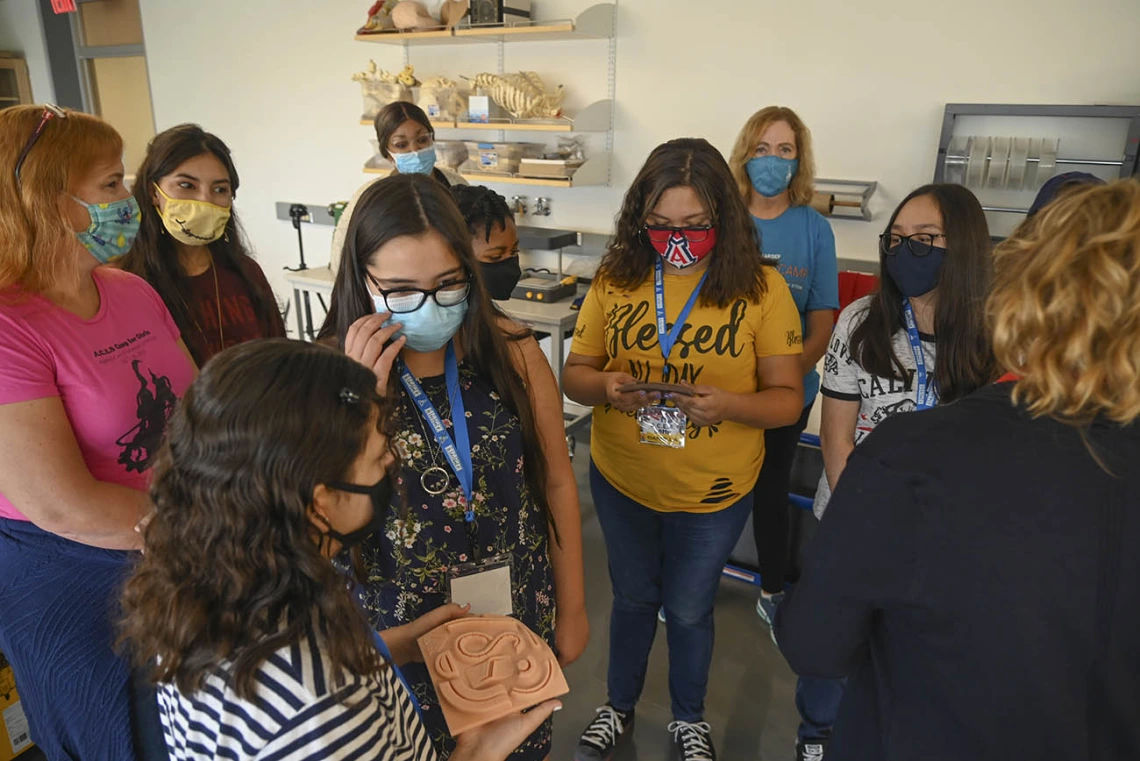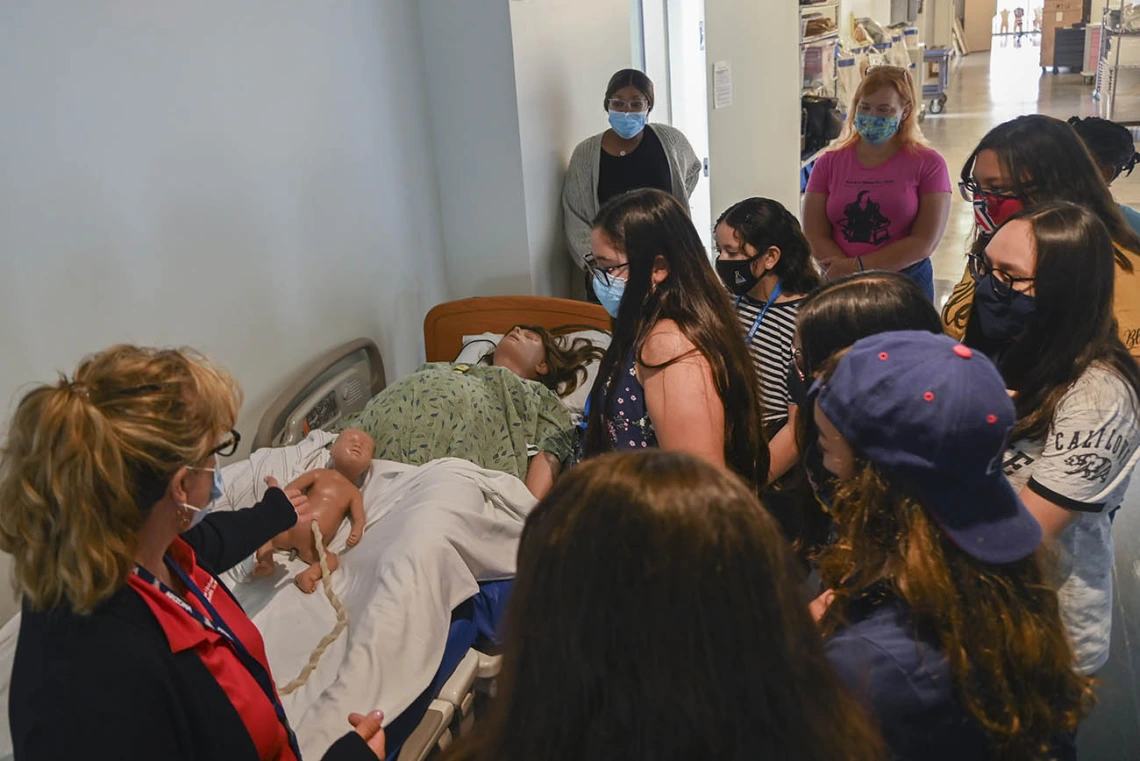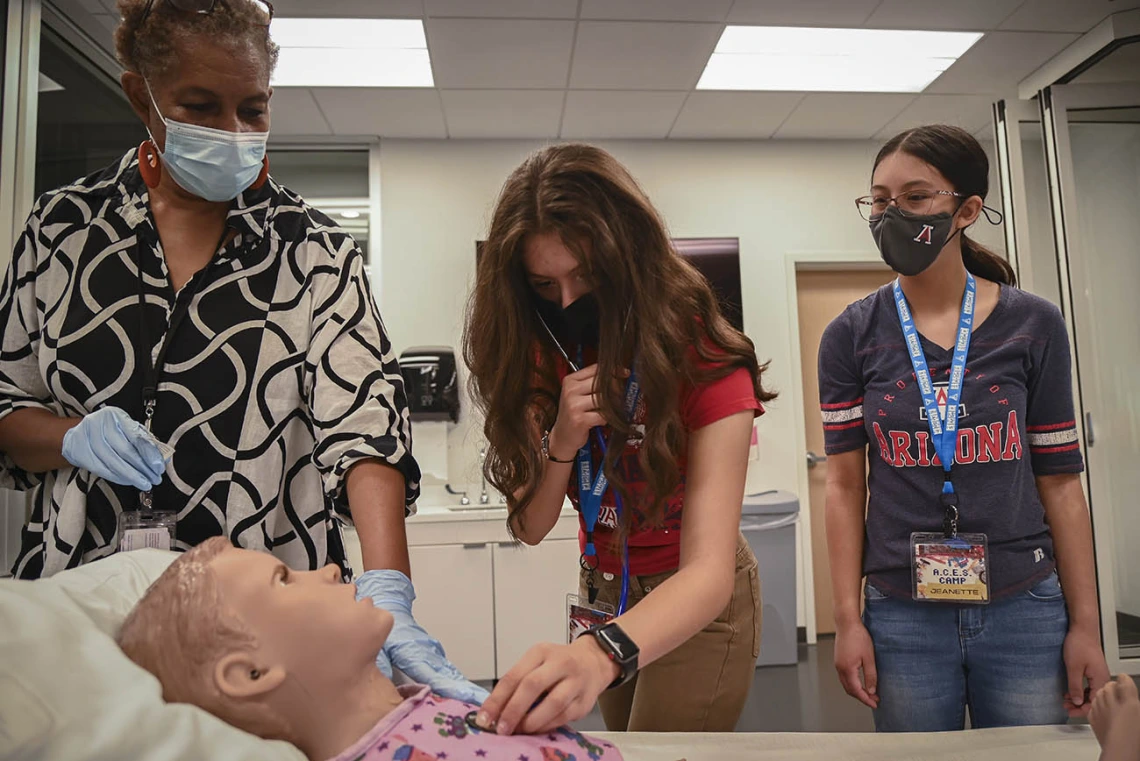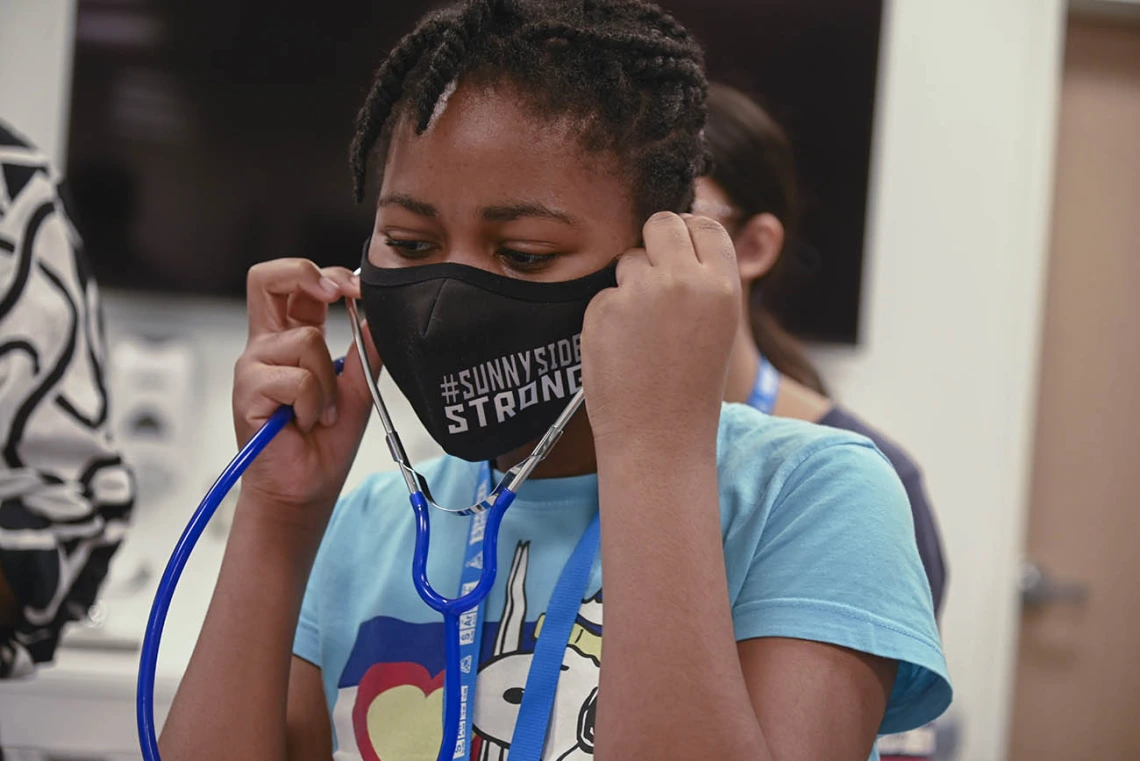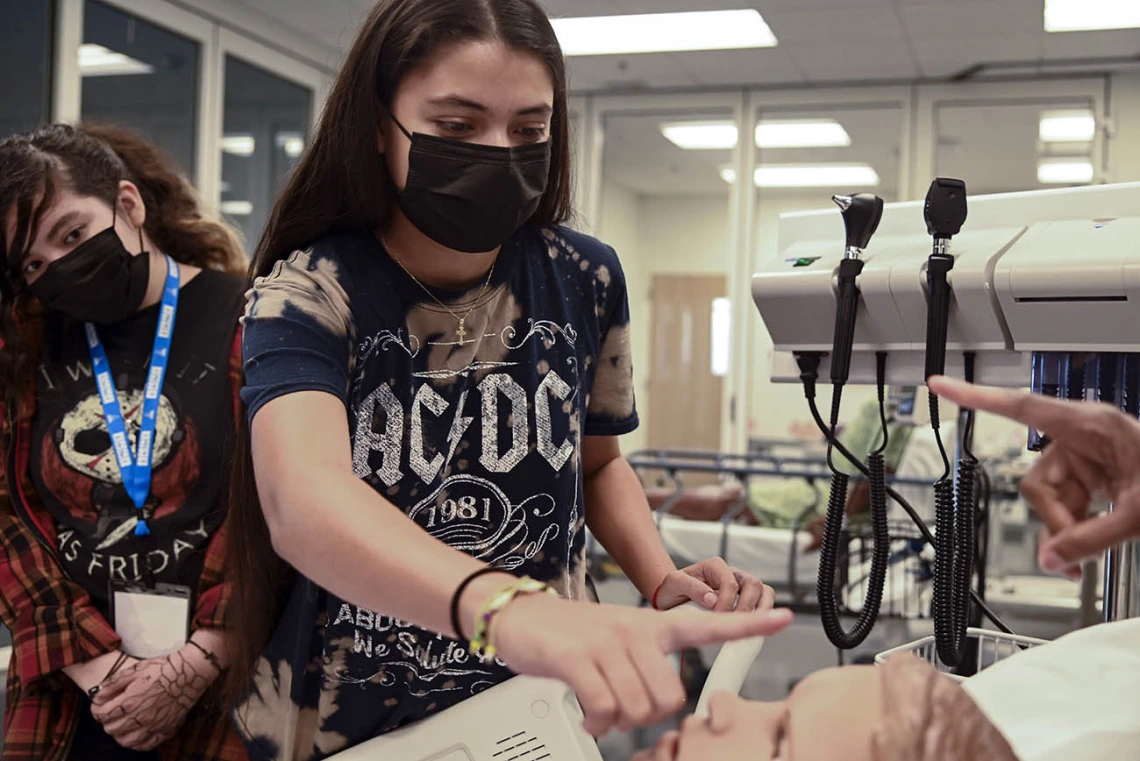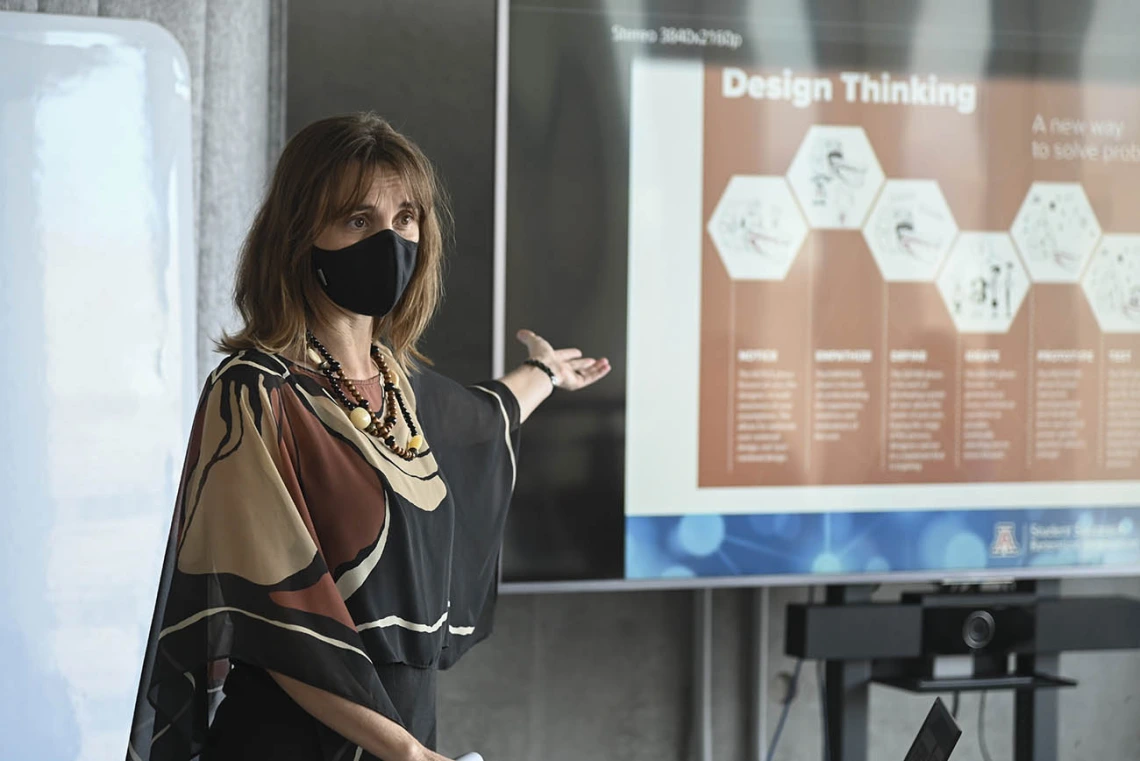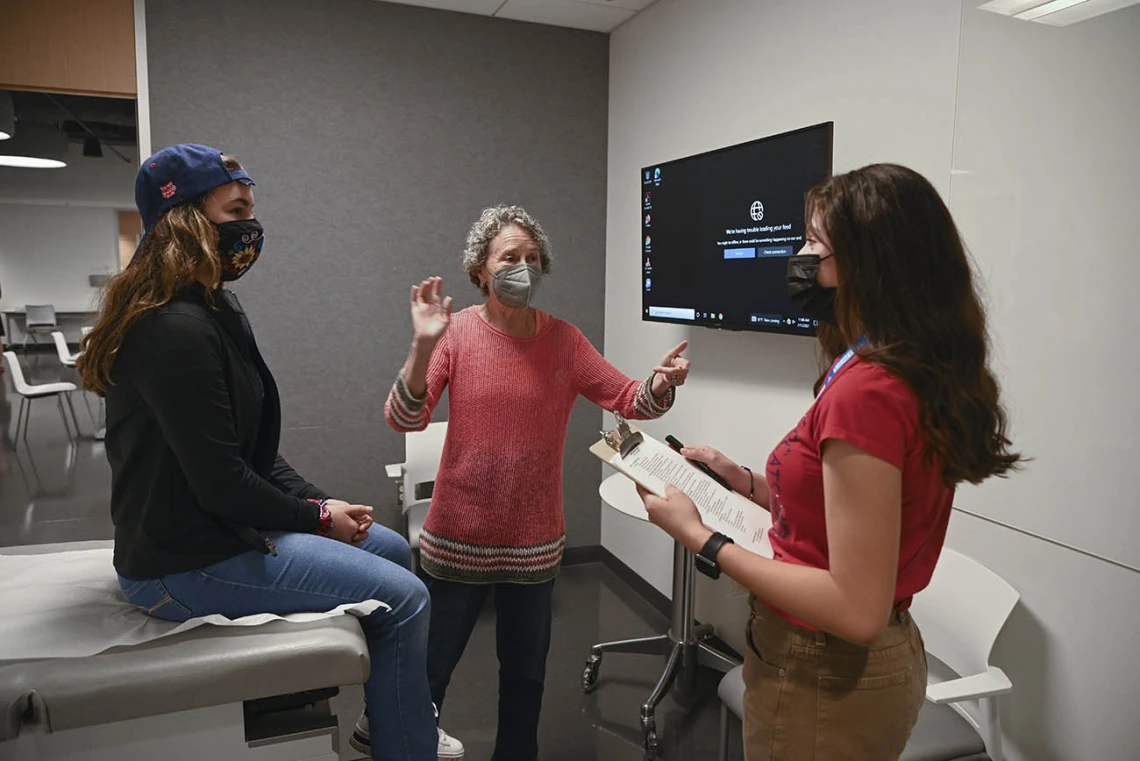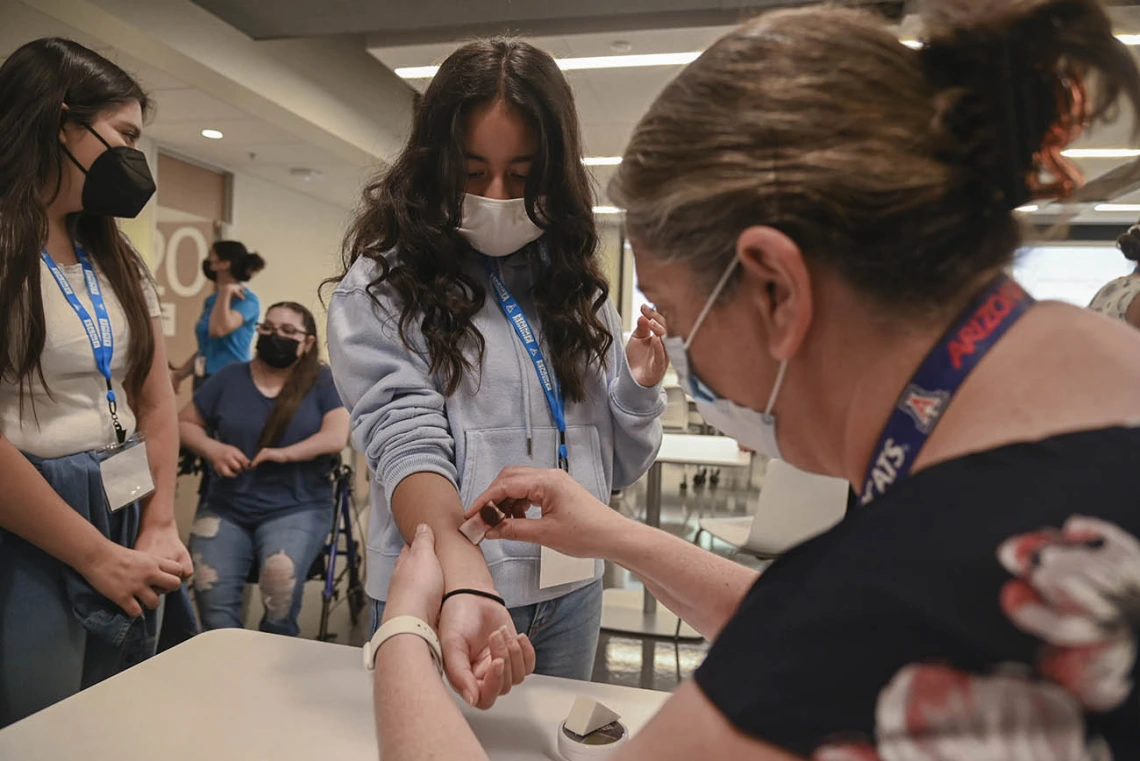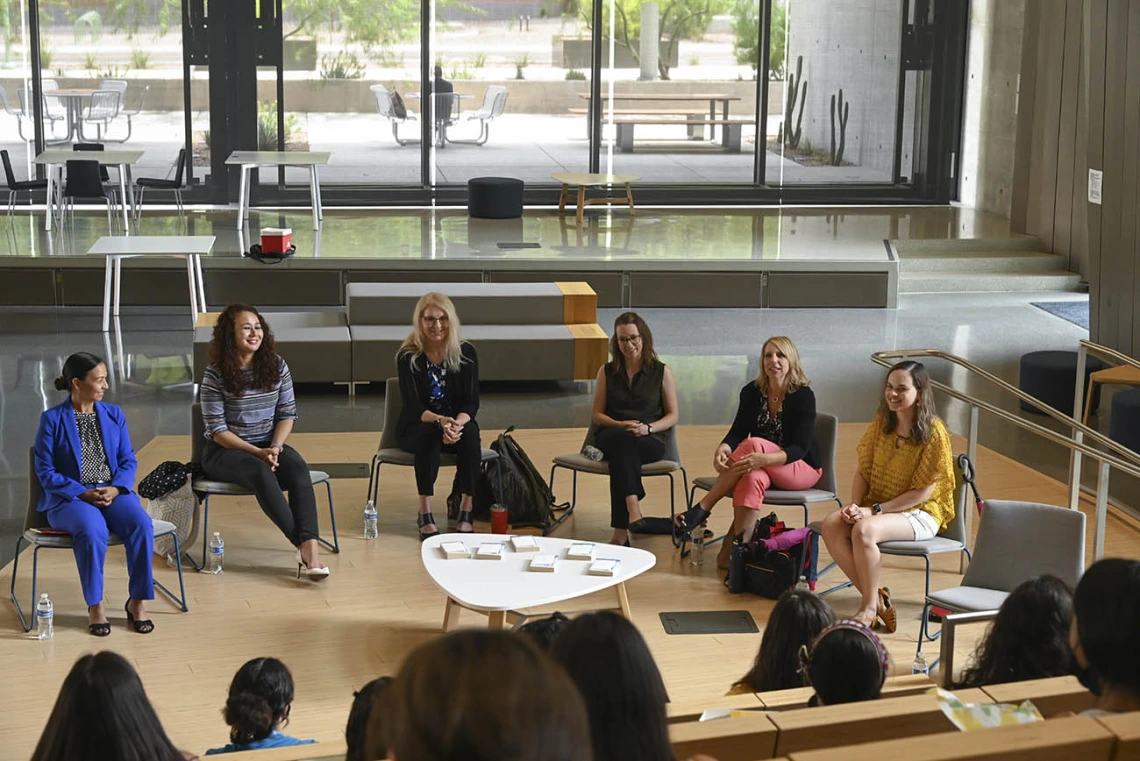SARSEF Girls’ Campers Wowed by HSIB Field Trip Experience
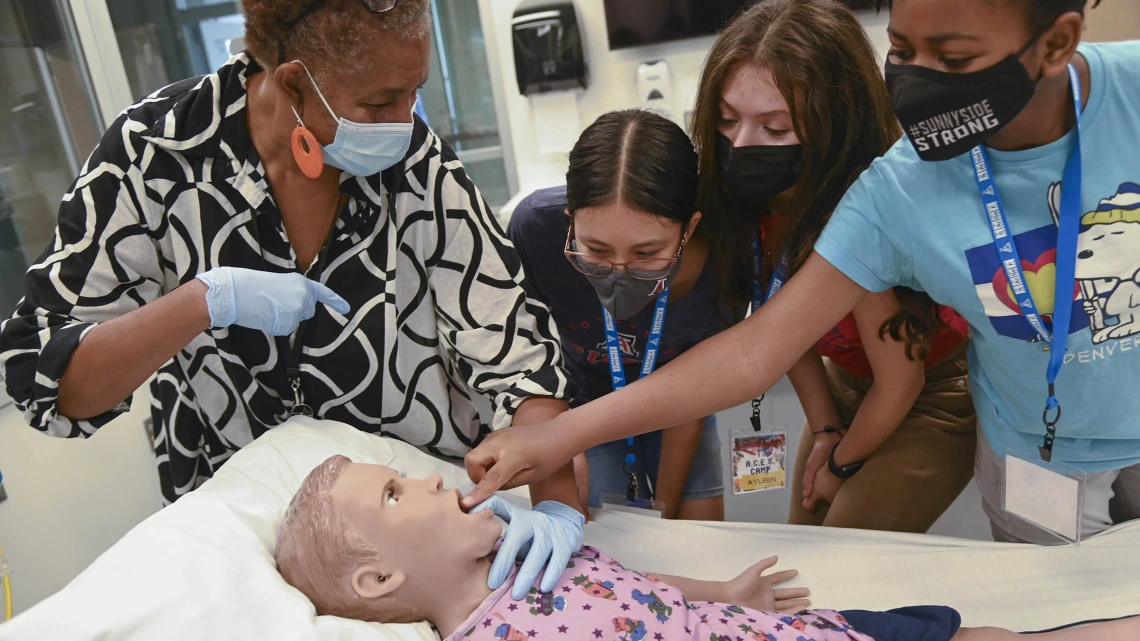
Southern Arizona Research, Science and Engineering Foundation (SARSEF) campers practice a procedure on Hal, the pediatric patient simulator, as explained to them by ASTEC’s Rochelle Marshall. The girls, all part of the Applied Career Exploration in Science (ACES) camp were, from left, Jeanette Mendoza, Ayleen Cruz and Victoria Vigbedorh.
The University of Arizona Health Sciences recently partnered with Southern Arizona Research, Science and Engineering Foundation (SARSEF) to host their Applied Career Exploration in Science (ACES) camp. The Science, Technology, Engineering, Math and Medicine (STEM) camp serves middle school girls from the Sunnyside Unified School District and enables them to explore a wide variety of careers to spark their interest in higher education in the STEM fields. ACES stresses teamwork, use of technology and hands-on learning, while exposing students to higher education at a critical time in their lives.
During the full-day field trip, the 26 students had the opportunity to be UArizona Health Sciences students for a day, becoming fully immersed in the activities offered in the Health Sciences Innovation Building (HSIB).
The students first met with Kasi Kiehlbaugh, PhD, director of the Health Sciences Design program, and participated in a design challenge, where they were presented with a problem and guided through the design thinking process to come up with a solution.
The girls then experienced hands-on training at the Arizona Simulation, Technology Education Center, (ASTEC) where they were divided into three groups that rotated through simulation activities, including working with Hal, a life-like child manikin, role playing a patient and a health care provider, and performing a virtual dissection on the Anatomage table. They also toured the ASTEC tissue lab, where they held artificial tissue used for suture training.
The girls wrapped up their day by taking part in an hour-long panel discussion featuring a team of distinguished female Health Sciences faculty and staff, who offered inspiration and insights into their career paths.
“I was torn on what I want to do career-wise, but now I have an idea of what I would want to do in the medical field,” wrote one of the girls at the end of the field trip. “The building is amazing. It made me feel like I belong,” wrote another camper.
At the end of the day, the girls received backpacks filled with STEM activities to continue their learning long after the tour.


